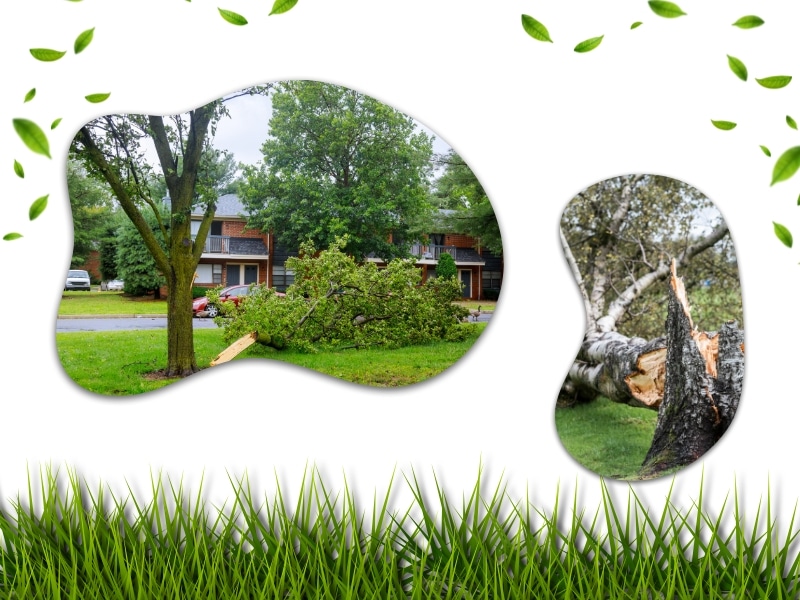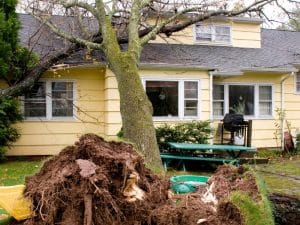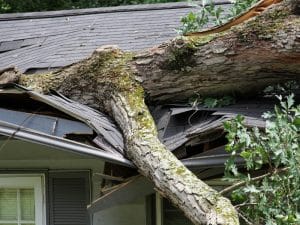Trees add beauty, shade, and value to your property. However, when they’re damaged or unstable, they can pose serious risks. It’s essential to know the signs of a hazardous tree to prevent accidents and ensure the safety of your home, loved ones, and community. This guide will help you understand when a tree might be dangerous, why it’s crucial to address the issue, and how professional arborists can assist you in managing it effectively.
How can you identify a hazardous tree?
Spotting a hazardous tree can be challenging, especially if you need help with what to look for. Trees can seem fine on the surface while hiding serious issues below. There are some basic things to consider when identifying a potentially hazardous tree: look for dead or dying branches, inspect the trunk for cracks or splits, check if the tree is leaning, examine the ground around the tree for signs of root damage, and assess whether the tree has suffered from recent storms or other environmental factors. If you need clarification on the safety of a tree, it’s always best to call a professional arborist.
What are the common signs of a hazardous tree?
Recognising the early warning signs of a hazardous tree is vital for preventing accidents and property damage. Common indicators include:
- Dead or dying branches: These can fall unexpectedly, especially during storms.
- Cracked or hollow trunk: Damage or hollowness weakens the tree’s structure.
- Fungal growth: Fungi at the base often signal rot or decay.
- Leaning: A tree leaning excessively, particularly after storms, is at risk of falling.
- Uprooted or damaged roots: Exposed or decayed roots can compromise the tree’s stability.
How do environmental conditions affect tree stability?
Melbourne’s varying climate plays a significant role in the health and stability of trees. Different environmental factors can weaken even healthy trees:
- Strong winds: High winds can snap weak branches or even topple unstable trees.
- Heavy rainfall: Excessive rain can cause waterlogged soil, which weakens root systems and may cause a tree to fall.
- Drought: Long periods without water can dry out a tree, making it more brittle and prone to damage.
- Soil erosion: Eroding soil can expose roots and reduce a tree’s stability.
Managing tree safety becomes even more critical if your property is in a bushfire-prone area. Proper tree care can help reduce fire risks and prevent environmental factors from turning a stable tree into a hazard.
Why is it essential to address a hazardous tree promptly?
Delaying action on a hazardous tree can lead to severe consequences. Here are some key reasons to address potential issues as soon as they’re identified:
- Property damage: A falling tree or large branch can cause significant damage to homes, cars, or structures.
- Injury: Falling branches or trees pose a serious risk to people and pets.
- Legal liability: You could be held responsible if your hazardous tree causes damage or injury.
- Worsening conditions: If left unaddressed, a tree’s condition can deteriorate rapidly, making removal more complex and costly.
Prompt action ensures safety and prevents further complications. If you’re facing an urgent tree issue,
What are the risks of ignoring a hazardous tree?
Failing to address a hazardous tree can result in long-term damage and unforeseen costs. Here’s what could happen if you ignore the warning signs:
- Falling trees or branches: Without timely intervention, trees can fall unexpectedly, especially during storms.
- Costly repairs: Property damage, such as roofs, fences, and vehicles, can result in expensive repairs or replacements.
- Higher removal costs: As a tree’s condition worsens, removal becomes more complicated and costly.
For peace of mind and safety, professionals should manage hazardous trees before the risks become a reality.
How can qualified arborists help you with a hazardous tree?
Professional arborists are trained to assess and handle hazardous trees safely. Here’s how an expert can assist:
- Accurate risk assessments: If a tree is deemed a safety hazard, arborists can evaluate the need to remove a dangerous tree and advise on the safest removal methods.
- Safe removal: They have the experience and equipment to remove trees, even in tricky situations, safely.
- Pruning and trimming: Arborists can remove dead or overhanging branches to reduce the risk of falling debris.
- Expert advice: They can provide ongoing advice on tree care and maintenance to prevent future hazards.
By hiring a qualified arborist, you can ensure the safety of your property and avoid potential dangers associated with unstable trees.
What should you know about compliance and permits for hazardous tree removal?
In Melbourne, certain trees are protected by local councils, and removing them may require council approval. Here’s what you need to know:
- Council regulations: Some trees, especially native species, are protected, and their removal requires a permit.
- Permit assistance: Tree removal services can help you navigate the permit application process for tree removal, ensuring you comply with local laws.
- Safe and legal removal: Following proper procedures ensures that hazardous trees are removed safely and legally.
Understanding and adhering to local regulations is essential when removing trees. This not only ensures legal compliance but also protects the local ecosystem. A tree removal permit is often necessary to ensure the removal process aligns with local environmental standards.
How can you ensure the safe removal of a dangerous tree?
Removing a hazardous tree requires expertise and the right equipment. Here are vital steps to ensure safe removal:
- Hire professional arborists: Always choose qualified professionals for safe tree removal.
- Use proper equipment: Removing trees requires specialised tools to prevent accidents or property damage.
- Ensure legal compliance: Follow local council regulations and secure the necessary permits before removing trees.
- Act quickly: Address tree hazards promptly before they worsen and become more dangerous.
Protect your property by addressing hazardous trees
In conclusion, knowing how to identify and address hazardous trees is crucial for maintaining the safety and aesthetics of your property. Ignoring the signs of an unstable tree can lead to significant risks, including property damage, injury, and costly repairs. A timely risk assessment for trees can help identify potential hazards and mitigate risks before they become serious. Environmental conditions like storms and droughts can further weaken trees, increasing the danger.
If you suspect a tree on your property is unsafe, don’t wait until it’s too late. The Yard offers expert tree services across Melbourne, with a team of qualified arborists ready to assess, prune, or remove hazardous trees. We also provide professional tree removal services in Moorabbin, ensuring the safe and efficient removal of trees that pose a threat to your property.
Protect your property with The Yard’s tree services!




